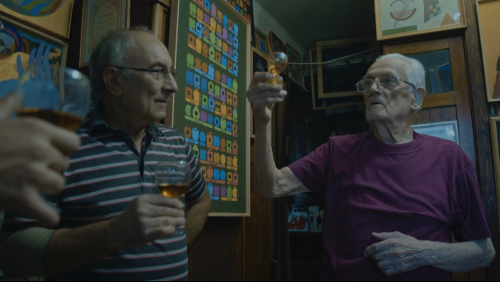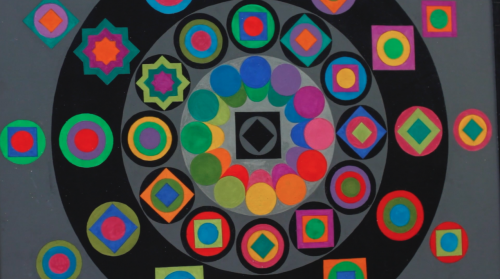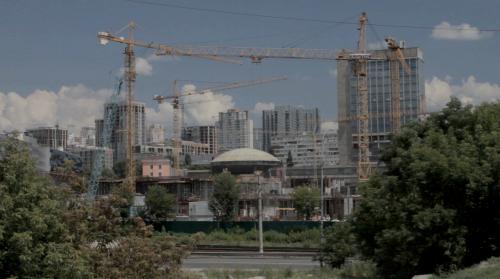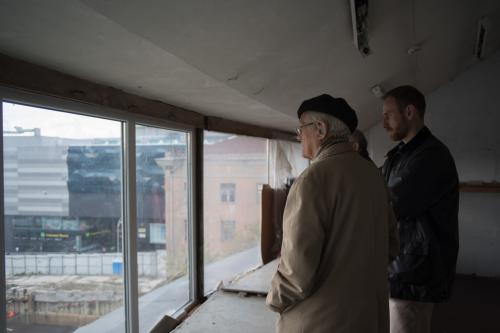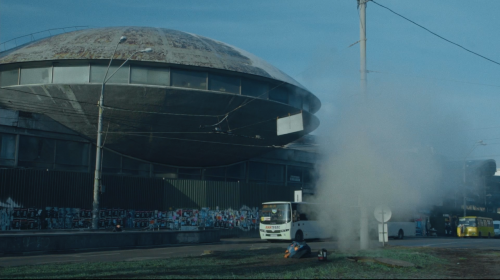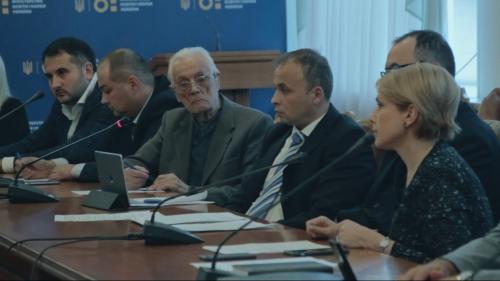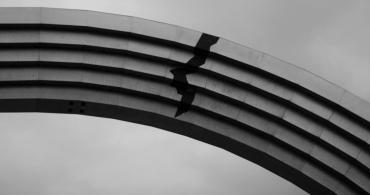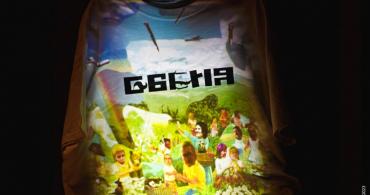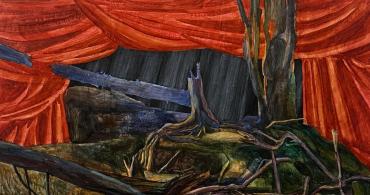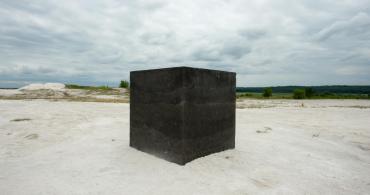The current Minister of Education and Science of Ukraine, Oksen Lisovyi, plays an equally important role. The then director of the Junior Academy of Sciences of Ukraine acts as a kind of mediator between the developer and the community. It was weird to hear him talking in Russian, moreover, when advocating for investing 150 million in the building of the complex. At Florian Yuriev's memorial performance in “Tarilka” during the Kyiv Biennale, for some reason, it was Lisovyi who presented the not-yet-approved reconstruction project and avoided answers about Aliyev's alleged gangster past.
Perhaps the most exciting metamorphoses took place behind the scenes with another supporting character, an architect, Vitalii Molochko. We notice him in several scenes as the author of the decision to take over the saucer by the new shopping mall. Then, Yuriev himself criticized his project and advocated restoration instead of reconstruction. Molochko has undergone incredible transformations: today, he is an ardent defender of architectural heritage. Molochko funded “Tarilka’s” roof painting and even submitted the building to the Register of Architectural Monuments. It was included there in 2020 following the Molochko project precisely. However, it kept the potential of placing food establishments there and using it for trade. Today, he is the project's author and the Presidential University's chief architect at the VDNH Expo Center in Kyiv. At the preparation stage, one of its pavilions had already been demolished to construct the above-mentioned university. After the Russian full-scale invasion, he headed the newly created Ukrainian International Institute for Reconstruction, which was designed to promote post-war reconstruction. The question arises: did the worldview and professional changes occur on a fundamental level, or was it just a modernization of the facade?
In one of the scenes, Florian Yuriev summarizes: “Architecture expresses social relations. Now they are chaotic, so chaos affects architecture as well.” His attempts to negotiate with the agents of chaos are unsuccessful. “I am an architect, your words are empty for me,” he insists. “Show me the project,” yet no one had seen one. This thoughtlessness and disorganization are tearing Kyiv apart. The most telling symptom is not the panorama of high-rise buildings but the footage of the flood that the car with Yuriev inside has to drive through. This resembles a biblical motif emphasizing the architect's image as a holy martyr.
Yuriev died at the age of 92, half a year before the full-scale invasion, which he also predicted. He even designed a coffin for himself. In March 2022, Vagif Aliyev was arrested by the Security Service of Ukraine. It seemed that at least this could save “Tarilka” from destruction. However, this story is far from being over: Aliyev has been released from custody. He continues constructing his shopping center and is going to buy the seized Russian share of the neighboring one from the state. The movie, nevertheless, reveals to us, the next “witnesses,” the fundamental formula: infinity, according to Florian, is a struggle divided by man.
Infinity According to Florian (2022; dir. Oleksiy Radinsky) will be available in cinemas until December 13, 2023.
To read more articles about contemporary art please support Artslooker on Patreon
Share: 
